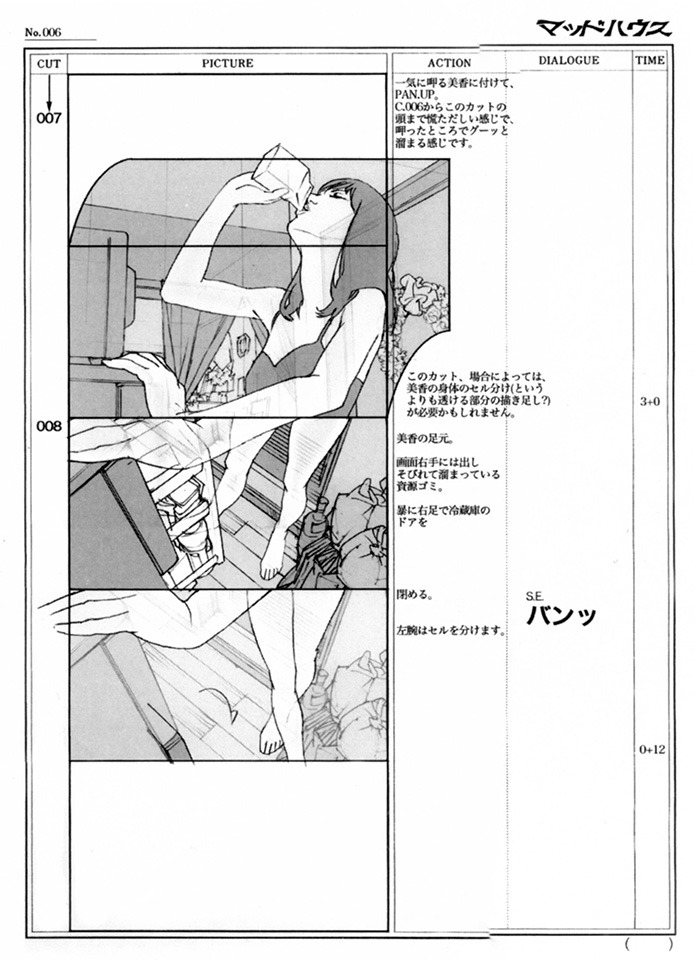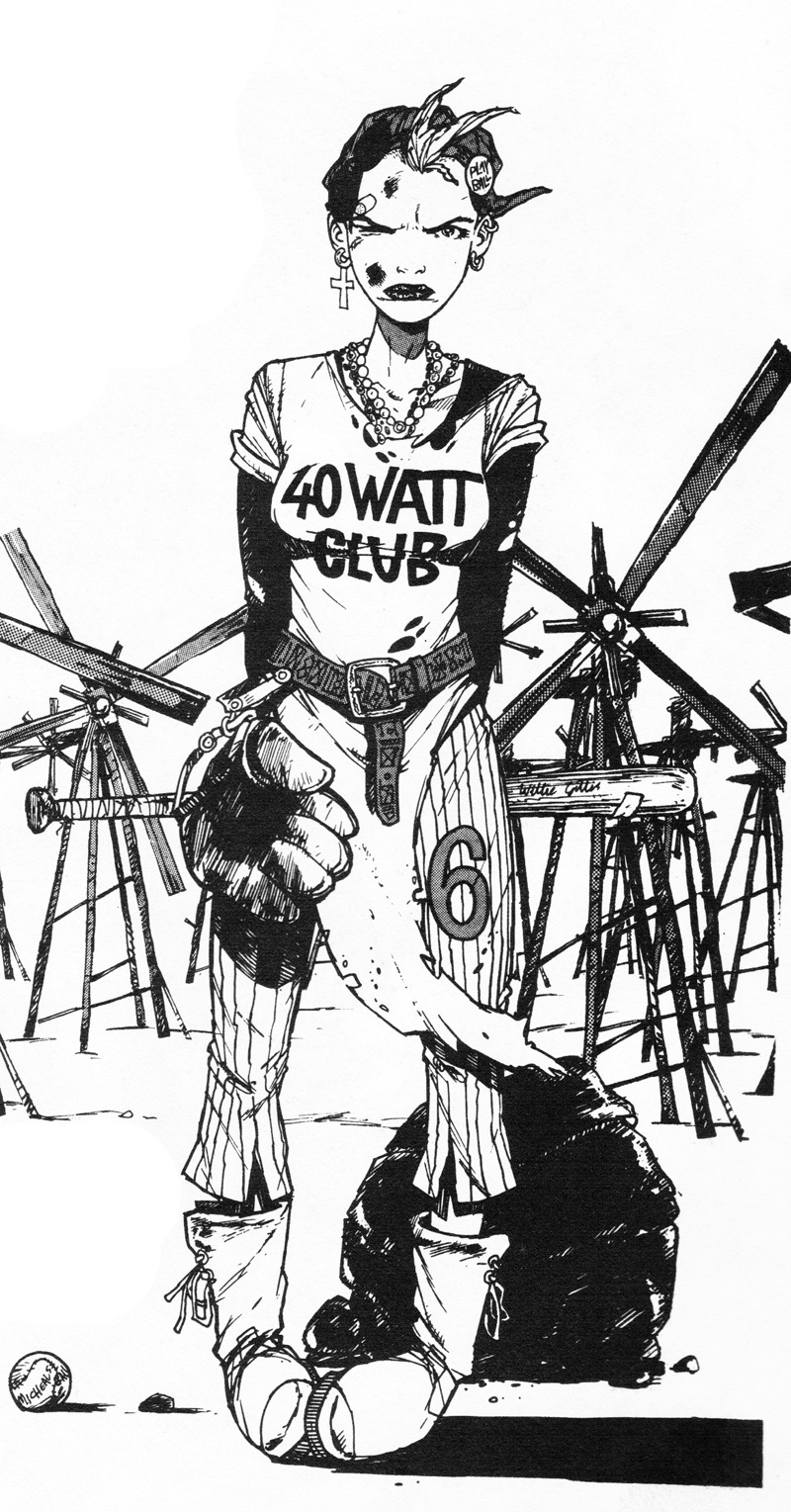For this studio brief we were tasked with producing, using an array of different physical media, 24 drawings based around a word given to us at random out of a hat. According to the brief, these drawings should be a quick response, though not rushed, to the word in question. Once we have produced the 24 drawings we are to choose what we feel is the most successful one and produce a further 12 drawings to develop the concept of said drawing even further. These will then be adapted into a short 6-12 frame storyboard for the final part of the task.
The word I was given was... car.
1)
Time Taken: Roughly 5 mins
Media: Fineliner Pen/Coloured Pen
To start off with this first drawing was created using fineliner and red coloured pen, media I am comfortable with, and depicts a family sedan covered in blood. From this you can infer that some sort of horrible accident has happened, judging by the trail of blood left behind. For authenticity I provided the added touch of blood up the side windows, as that is the trajectory it would have been travelling. This relates to the word 'car' thorough associated concepts such as road-rage and reckless driving.
2)
Time Taken: 20 mins
Media: Fineliner Pen
For this drawing of the Deloreon from Back to The Future, I took a more technical approach and experimented a little with the perspective. I refrained from using a ruler but tried by best to capture the famous vehicle from on overhead perspective using images from the internet for reference. While I am happy with the body of the vehicle, the wheels, I believe are not consistent with the perspective of the rest of the vehicle. I also botched the pattern of the tires, which look more like rope than rubber tires, something I seek to amend in future drawings.
3)
Time Taken: >5 mins
Media: Fineliner Pen
Here is a quick profile-view drawing of a car I did in fineliner, purely from imagination. While the design is generally uninspiring, I feel it is important I get into the habit of nailing the basic shape of your average car from memory.
4)
Time Taken: Roughly 20 mins
Media: Fineliner Pen
Here I wanted to reflect the personalities of the drivers in the designs of the cars to a comical and exaggerated degree, hence I decided to give this old rover a bowler hat and moustache. The parallels the archetypical Rover driver, a well groomed, formal type of gentleman from a very specific time period. I made this decision to anthropomorphize the car as the front looks somewhat like a human face. With the pen work I gave the outline a slightly thicker brush stroke in order to reinforce the shape of the car from the perspective I was drawing it form. Old Rovers have a very elegant curved shape, which I thought was important to get across as it is essential to the personality of the car.
5)
Time Taken: Roughly 10 mins
Media: Fineliner Pen
Here I decided on a simple 2/3 view of the car in order to add variety to the perspectives of my drawings. The design of the car itself is a simple, 50s inspired modernist design, going by the style of the body at the back. I gave the car thicker line work around the outside in order to define the shape and simple crosshatching on the windows to add a little texture to differentiate the windows from the body of the car.
6)
Time Taken: 10-15 mins
Media: Fineliner Pen
For this drawing I assembled a car out of numerous musical instruments to create a sort of on-man-band style design. Small things such as the exhaust ports being the pipes of an organ and the horn being a trumpet ensured that each design decision was motivated in some way by the idea of a car as a sort of one-car-band.
7)
Time Taken: 30 mins
Media: Fineliner Pen
For this drawing I was inspired heavily by Brendan Mccarthy's designs for the cars in Mad Max: Fury road. The design is basically that of an old run down sedan but with objects attached to it in order to survive the post apocalypse. I wanted the design to be anarchic and cluttered in order to reflect Mccarthy's work, but at the same time give some logical reasoning behind the aesthetic decisions. Mcarthy's designs often have some sort of intention behind them, constructed from used parts and objects that tell stories about the world they occupy. I attempted this by incorporating a police riot shield with bullet holes in it chained to the windshield to protect the driver as this subtly conveys the backstory of the world through visual aesthetic.
8)
Time Taken: >5 mins
Media: Fineliner Pen
A simple monster truck design with flames on the side transporting cargo which is tied down in the back. Not the most exciting design, but important in forming the basis for my next design...
9)
Time Taken: Roughly 20 mins
Media: Watercolour Paint
For this design I ventured into watercolour, trying to capture the texture of mud splattered up the side of a monster truck as it ascends a steep incline. I made sure the direction of the mud up the body of the truck is consistent with the direction the wheels are turning and with the direction the mud is being splattered. The narrative aim of this drawing was to convey that the truck was having trouble traversing the steep incline, which I believe it effectively conveys.
10)
Time Taken: Roughly 10 mins
Media: Red (Pink) Ink and Fineliner Pen
To change things up a bit I broke out the ink brushes to colour a simple profile fine liner drawing of a ferrari. While the ink I used was supposed to be Red, I did not apply enough of it, so when the time came to scan it into the computer the ink had faded, leaving me with this garish pink colour.
11)
Time Taken: Roughly 10 mins
Media: Watercolour Paint and Fineliner Pen
Another profile view of the rover design I drew earlier, minus the moustache and bowler hat. The intention here was to use green watercolour to give the illusion of a shiny finish to the body of the car, though I can harpy say I was successful in doing this. The overall effect looks like something out of a hippy's wardrobe, a sort of tie-dye finish that is miles from the intended outcome. Next time in seeking to achieve this effect I will apply more paint with a different brush, more evenly distributed in order to achieve the indented effect.
12)
Time Taken: 5 mins
Media: Fineliner Pen
Going back to basics, here I went back to using simple fine liners on a smaller scale to depict a helmeted figure riding in a go-kart. I didn't want to overcomplicate the design, hence why the character has no discernible features besides the helmet. In a way this was kind of inspired by small lego men with their simple primitive shapes. The hands even resemble that of a small lego man, as I could not be bothered with drawing the individual fingers.
13)
Time Taken: 25-30 mins
Media: Fineliner Pen
At the complete opposite end of the spectrum aesthetically I drew a giant bipedal car mech, inspired primarily by Metal Gear Rex from the video game series Metal Gear solid. I wanted to incorporate as many car parts and vehicular iconography as possible in order to differentiate it enough from the design that inspired it. The radome, a staple of Rex's design, is here replaced with a car tyre. I also gave my design a robotic arm similar to that of factory robots, specifically those which build car parts.
14)
Time Taken: 5 mins
Media: Graphite Pencil
For this design I used only pencil to draw a car design from imagination. The overall design of the car falls flat in my opinion due to lack of shading or gradient.
15)
Time Taken: Roughly 10 mins
Media: Fineliner Pen
For this drawing I strayed away from simply drawing cars and decided to branch out the concept. Here I tried to depict road rage by drawing a character sticking their middle finger out of a car window at supposed passers by.
16)
Time Taken: Roughly 10 mins
Media: Watercolour Paint and Fineliner Pen
For this drawing I decided to think outside the box and explore ideas that revolve around cars but do not explicitly feature cars. The idea behind this drawing was 'invisible cars' and is inspired partially by old Wonder Woman comics where she would drive an invisible car. Personally I can see the absurdity of this drawing being a great fit for a storyboard or short narrative piece of animation.
17)
Time Taken: Roughly 10 mins
Media: Watercolour Paint and Fineliner Pen
Speaking of absurdity, for this drawing I decided to take the concept of a clown car and apply it to everyday commuters. This again, is a concept I can see myself exploring in greater detail in a storyboard or animation.
18)
Time Taken: 10-15 mins
Media: Fineliner Pen
For this drawing I revisited a concept I explored a few drawings ago but at a completely different end of the spectrum. Often fast sports cars are associated with a certain lifestyle, that of the swaggering young adult who wears sports caps and fake plastic glasses at warehouse raves.
19)
Time Taken: 15 mins
Media: Fineliner Pen
Another car drawing inspired by Brendan Mccarthy's revisualisations for Mad Max, this time from a front on perspective. Compared to other drawings of this style, this one is fairly simplistic though I think on a technical level it captures the perspective view fairly well.
20)
Time Taken: >5 mins
Media: Fineliner Pen
A a quick profile shot of a car with a retrofuturist aesthetic in fine liner. The lines on this one are a little rough resulting in a drawing that looks somewhat amateurish.
21)
Time Taken: 5 mins
Media: Fineliner Pen
For this drawing I further explored some of the concepts up until this point and combined the 'road rage' idea with the 'invisible car' idea. Upon reflection, these ideas seem to be a perfect fit for the 12 images and storyboard, so I will most likely be exploring these ideas further in the future.
22)
Time Taken: >5 mins
Media: Fineliner Pen
A quick fine liner drawing of a bumper car/ dodgem. A simple design, but I feel the perspective was effectively captured and that the outline gives the drawing depth.
23)
Time Taken: >5 mins
Media: Fineliner Pen
A quick fine liner drawing of two people, both riding in bumper cars crashing into each other. The character designs are purposely simplistic, and the designs of the bumper cars are based off my previous design with the lighting bolt down the side of the door.
24)
Time Taken: >5 mins
Media: Fineliner Pen
A quick profile shot of a car with a wooly hat drawn in fine liner. This further explores the concepts made apparent in previous drawings of personifying cars with human characteristics and clothing.
Of these 24 images, the ones I wish to further explore in my upcoming 12 images are numbers 16 and 17 as I feel the absurdity of the imagery has the most potential for a storyboard. For my upcoming 12 images I will try and explore a wider array of media, as I tended to stray a little too close to my comfort zone for these 24 responses. I will also try and incorporate colour more often as that is an often neglected aspect of my work I feel I can improve on.







_poster.jpg)






_poster.jpg)


































